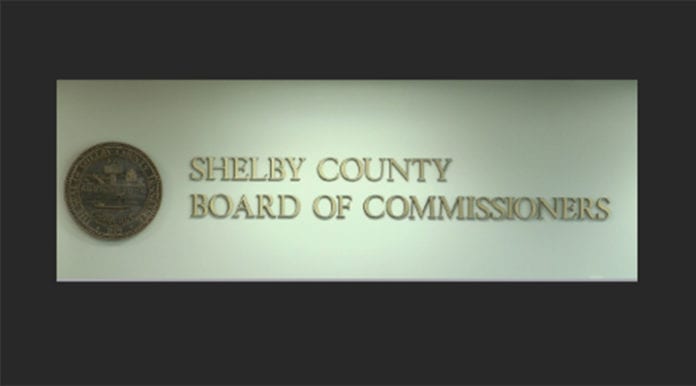by James Coleman —
As communities across the country brace for another wave of COVID-19 infections with the onset of flu season, the Shelby County Board of Commissioners received a grim assessment of the months ahead during Monday’s meeting.
The confluence is expected to exacerbate efforts to control the pandemic. The viruses share symptoms such as fever, sore throat, coughing and nausea. People gathering inside during cold weather also increases the likelihood of spread.
“We really are at a place where individual and family choice is critical,” said Dr. Alisa Haushalter, director of the Shelby County Health Department.
“We are continuing to see trends upwards, as is the rest of the state and the rest of the United States. We can’t pinpoint it on any one specific area or place of transmission. We do know that it is related to social gatherings, primarily, and that could be as much personal gatherings as well as being in public spaces.”
Shelby County had 37,004 reported cases as of Wednesday morning, with 211 added over the last 24 hours. Deaths totaled 569. Meanwhile, 7,735 were reported under quarantine. Statewide, there were 254,220 cases, with 3,241 deaths. Haushalter noted that on the 20th, the county had been averaging 200-220 cases per day. However, that was followed by two days with over 400 new cases.
“It does mean we are trending upward. Our positivity rate is trending upward and our reproductive rate is trending upward,” she said.
Currently, the reproductive rate of infection is 1.23 percent. For every 1 person that is infected, it is transmitted to an average of 1.23 people. During summer’s peak the rate was similar. If rates don’t decrease soon, a surge is expected.
“It’s pretty concerning to hear today’s numbers. We are trending upward and the surge may be earlier than we anticipated,” said Commissioner Mark Billingsley, District-4.
Masking has been widely accepted in the county, despite the increase in rate of infections. Haushalter cited surveys conducted by the University of Memphis that show rates are well above 90 percent. The practice reduces the risk of transmission from 17 percent to three percent. A lack of vigilance on the part of individuals was cited as another factor in the jump.
“People are fatigued from COVID and they are oftentimes letting their guard down when they are with friends and people that they know very well,” said Haushalter. “We know in employee settings people will be wearing masks the whole time they are in the workplace, but then they go into the break room and take the mask off and have a break with somebody.”
Along with the spike in infections has been an increase in hospitalizations. Rural communities, which have fewer healthcare resources and have been slower to adopt masking, are contributing to the increase.
“One of the hospitals, when we looked at their data, over 40 percent of their admissions were not Shelby County admissions. They were from other counties. So we are going to be impacted in Shelby Co., particularly in the hospitals as the rural communities see more and more cases,” said Haushalter.
The possibility of opening the surge site was also discussed. Located downtown in the building that once housed The Commercial Appeal newspaper, it was converted to handle overflow, if hospitals become overcrowded. The facility is run by the Tennessee Department of Health.
“It’s a regional asset. It’s ready to be opened if there’s a need to do so,” said Haushalter.
To address homelessness during the pandemic, the commission approved a service provider contract with Catholic Charities of West Tennessee for prevention services through rapid rehousing of individuals. Sponsored by Pro-Tempore Brandon Morrison, District-13, the $1.32 million contract lasts through December 29, 2022.
The commission also agreed to transfer $268,000 from fiscal year 2021 CARES act funding to the Trustee to cover further coronavirus-related costs. That measure was sponsored by Comissioner Edmund Ford Jr., District-9.
The service provider contract, however, does not come out of the original CARES Act funding, with $1.7 million remaining in the act’s coffers.
“This is a separate pot of money that is coming from the state that was specifically given to community service for this action. It is not inclusive of the $49 million that we originally got,” said Chairman Eddie Jones, District 11.




